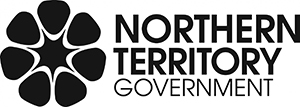MacDonnell ranges priority place feral herbivore survey
The feral herbivore survey and culling supports a larger Commonwealth project ‘Threat Abatement in the MacDonnell Ranges for Threatened Fauna and Flora’ (Priority Places Project), focussed on improving landscape condition and the recovery of threatened species found within the MacDonnell Ranges bioregion.
This bioregion contains a high number of threatened animal and plant species, including:
- Central Rock-Rat (Zyzomys pedunculatus)
- Central Australian Rock-wallaby (Petrogale lateralis centralis)
- MacDonnell Ranges Cycad (Macrozamia macdonnellii)
- Central Australian Cabbage Palm (Livistona mariae subsp. mariae)
Feral herbivores can have significant negative impacts on the environment and social/cultural values of the landscape. These impacts include damage to vegetation through feeding behaviour and trampling; suppression of recruitment in some plant species; damage to wetlands through fouling, trampling, and sedimentation; competition with native animals for food, water and shelter. Feral herbivores also cause damage to sites of cultural significance to Aboriginal people such as waterholes and destruction of bushfood resources.
Most of the survey area is Aboriginal land, including jointly managed National Parks and Land Trusts. Aboriginal land managers in the southern half of the Northern Territory have, through the work of the Central Land Council’s (CLC) Indigenous Ranger Groups, been increasingly proactive in the management of large feral herbivores in recent years. The Priority Places Project was developed in close consultation with CLC and the results of this survey will support consultation with Traditional Owners to gain support for culling programs, which in turn will assist in training and capacity building.
Get the copy of the survey report, go to the Territory Storries website.


